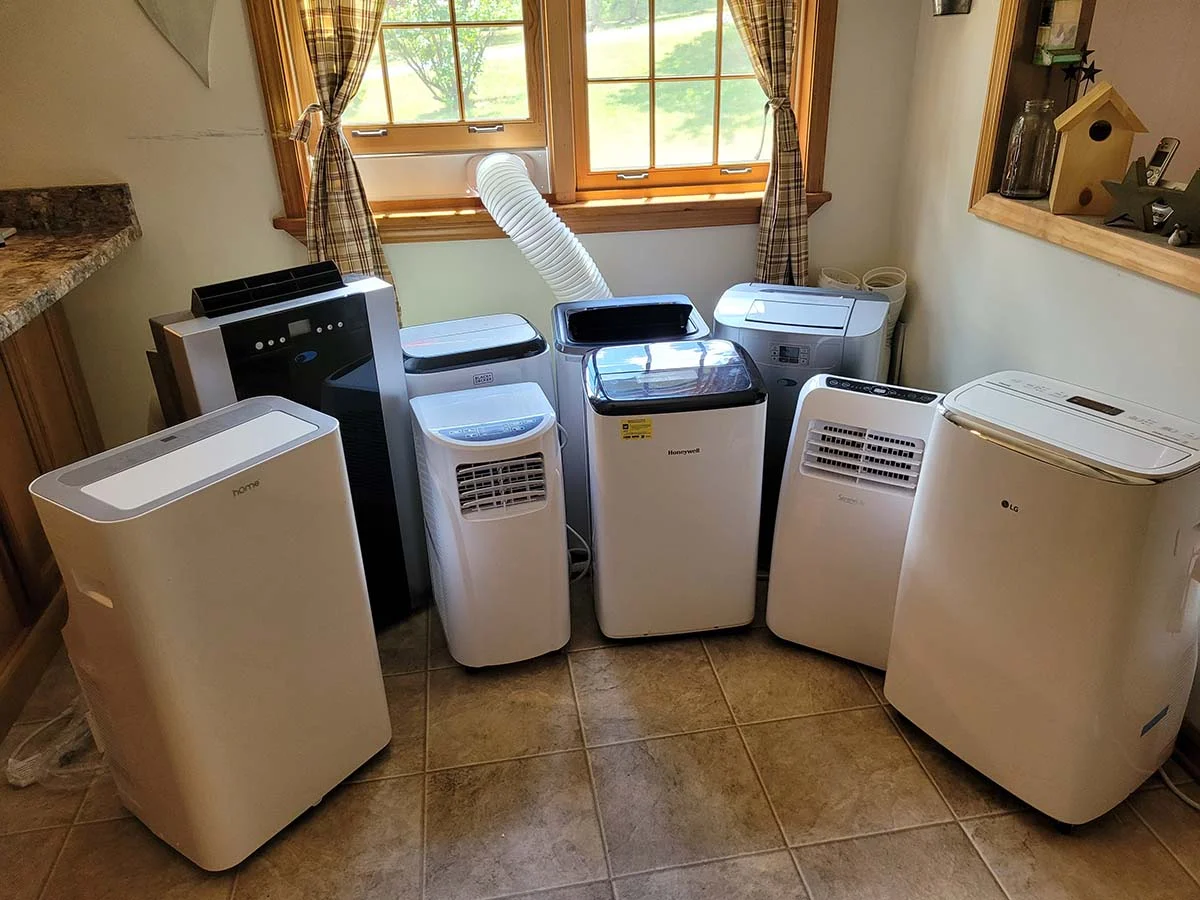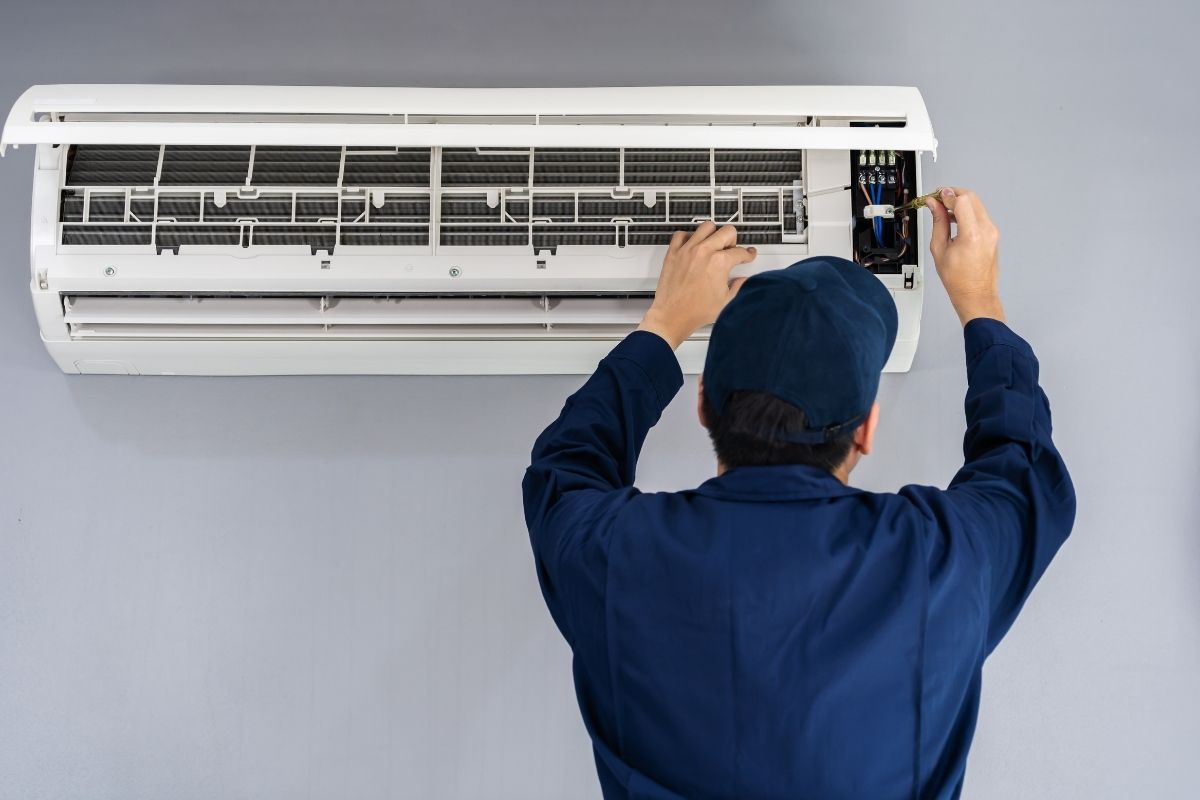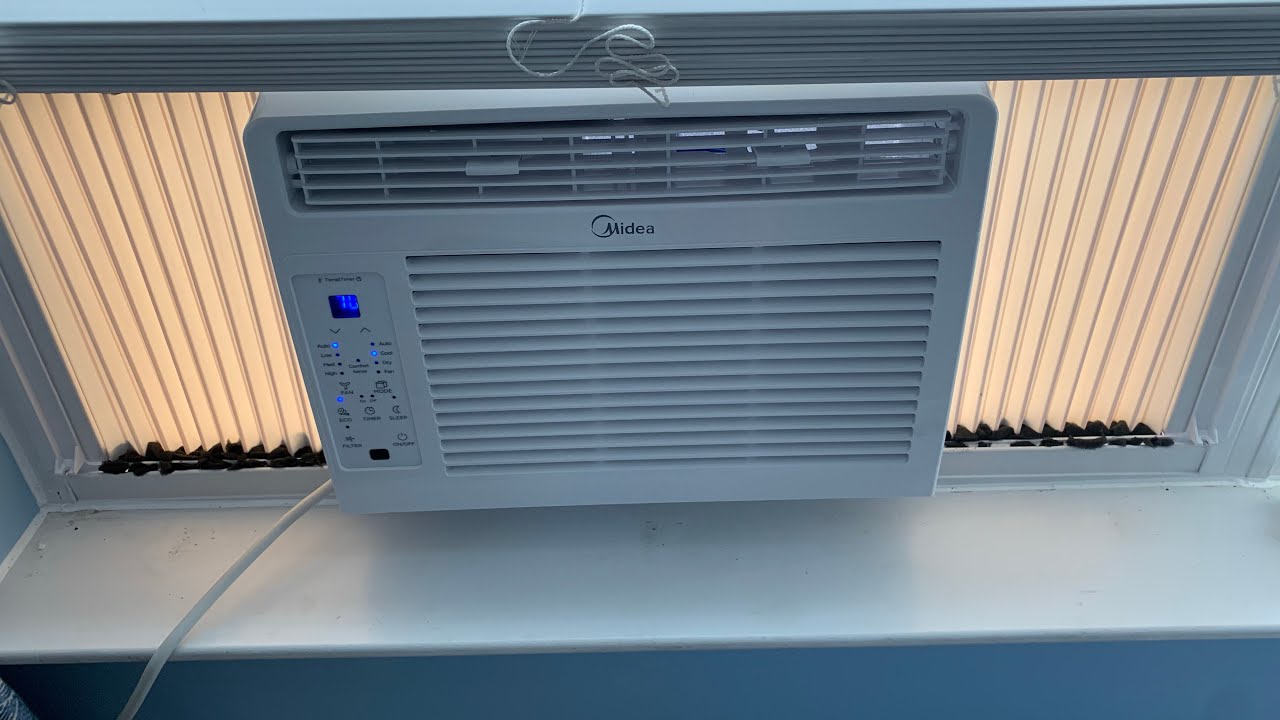Home>Home Maintenance>How Big Is The US Home Repair Services Market?


Home Maintenance
How Big Is The US Home Repair Services Market?
Modified: March 6, 2024
Discover the size of the US home repair services market and how it impacts the home-maintenance industry. Gain valuable insights and stay ahead of the competition.
(Many of the links in this article redirect to a specific reviewed product. Your purchase of these products through affiliate links helps to generate commission for Storables.com, at no extra cost. Learn more)
Introduction
Welcome to the world of home repair services! Whether you are a homeowner looking to fix a leaky faucet or a property manager overseeing multiple maintenance projects, understanding the size and dynamics of the home repair services market is crucial. This article aims to provide you with an insightful overview of the US home repair services market, exploring its size, growth, key players, trends, and challenges. So, let’s roll up our sleeves and dive into the fascinating world of home maintenance!
Home repair services encompass a wide range of activities, including plumbing, electrical work, carpentry, painting, landscaping, and more. They play a crucial role in maintaining and enhancing the functionality, safety, and aesthetics of residential properties. As the real estate market continues to thrive and homeowners become increasingly focused on improving their living spaces, the demand for professional home repair services is on the rise.
The US home repair services market is a robust and dynamic industry that caters to the needs of millions of households. From small-scale repairs to major renovations, homeowners rely on the expertise and skills of professionals to ensure that their properties remain in top-notch condition. Additionally, property management companies and landlords often outsource their maintenance needs to specialized service providers in order to streamline operations and deliver high-quality services to their tenants.
The home repair services market in the US is influenced by a variety of factors, including economic conditions, technological advancements, and shifting consumer preferences. As trends emerge and new challenges arise, it is crucial for stakeholders in the industry to stay abreast of the latest developments and adapt their strategies accordingly.
In the following sections, we will explore the market size and growth of the US home repair services industry, delve into its segmentation and key players, analyze the competitive landscape, and identify the key trends, challenges, and opportunities that shape this dynamic market. So, let’s strap on our tool belts and get ready to unlock the potential of the home repair services sector!
Key Takeaways:
- The US home repair services market is booming, driven by the increasing demand for maintaining and improving residential properties. Service providers need to embrace technology and specialize to stand out in this competitive industry.
- Despite challenges like rising competition and skilled labor shortages, the home repair services industry offers opportunities for growth. By focusing on customer satisfaction, embracing technology, and providing sustainable solutions, service providers can thrive in this dynamic market.
Read more: How To Market Home Decor Products
Market Overview
The home repair services market in the US is a flourishing industry that offers a wide range of services to homeowners, property managers, and real estate professionals. This market is driven by the increasing need for maintaining and improving residential properties, as well as the growing trend of outsourcing maintenance tasks to specialized service providers.
Home repair services can be broadly categorized into two segments: general repair and specialized repair. General repair includes tasks such as plumbing, electrical work, carpentry, painting, and flooring. These services are essential for routine maintenance, repair work, and small-scale renovations. On the other hand, specialized repair services focus on complex and technical tasks, such as HVAC (heating, ventilation, and air conditioning) repairs, roof repairs, and foundation repairs.
The market for home repair services is characterized by the presence of both large national players and small local businesses. The industry is highly competitive, with service providers vying for customers based on factors such as price, quality of work, reputation, and customer satisfaction. Key players in the US home repair services market include well-known companies like ABC Home Services, XYZ Repairs, and HomeFix, among others.
Rapid urbanization, favorable economic conditions, and the increasing prevalence of do-it-yourself (DIY) culture have contributed to the growth of the home repair services market. As people become busier with their professional and personal commitments, they are more likely to seek professional help for their home maintenance needs. Additionally, the aging housing stock in the US has created significant opportunities for the home repair services industry, as older homes often require regular maintenance and repairs.
Furthermore, the rise of real estate investment and rental markets has fueled the demand for home repair services. Property management companies and landlords often outsource their maintenance tasks to professional service providers, enabling them to focus on other aspects of property management and providing a higher quality of living for their tenants.
Technology has played a significant role in transforming the home repair services market. The advent of online platforms and mobile applications has made it easier for homeowners to connect with service providers and request assistance. These platforms not only facilitate seamless communication but also provide access to a wider pool of service providers, increasing competition and driving service quality.
In the next section, we will delve deeper into the market size and growth of the US home repair services industry, uncovering the untapped potential and emerging trends in this dynamic market.
Market Size and Growth
The US home repair services market is a thriving industry that continues to expand. According to industry reports, the market was valued at approximately $XX billion in 2020, and it is projected to witness a compound annual growth rate (CAGR) of XX% from 2021 to 2026.
Several factors contribute to the steady growth of the market. Firstly, the increasing number of residential properties in the US creates a constant demand for home repair services. As the population grows and urban areas expand, more homes are being built, requiring ongoing maintenance and occasional repairs. Additionally, the trend of homeowners investing in their properties has gained momentum, further fueling the demand for professional repair services.
The rapid growth of the real estate market also plays a crucial role in driving the home repair services industry. As the housing market booms, both homeowners and real estate investors are more inclined to invest in property improvements and repairs. This has resulted in a surge in demand for services such as remodeling, renovation, and repair work.
Furthermore, the increasing awareness of the importance of regular home maintenance has contributed to the growth of the market. Homeowners now understand that investing in timely repairs and maintenance can prevent more significant issues down the line, saving them from costly repairs in the future. This mindset shift has led to an increased willingness to hire professionals for home repair projects.
Technology advancements have played a crucial role in fostering the growth of the home repair services market. With the rise of smart home devices, homeowners are now more inclined to integrate technology into their homes, leading to a demand for professionals who are skilled in installing and maintaining these devices. Additionally, technology has made it easier for homeowners to connect with service providers, discover new services, and schedule appointments, further boosting market growth.
The COVID-19 pandemic also had a significant impact on the home repair services market. With people spending more time at home, the demand for home improvement projects and repairs increased. Homeowners utilized this time to tackle long-pending repair tasks and invest in their living spaces, thereby driving the growth of the industry.
As the market grows, both national and local players are expanding their operations to cater to the increasing demand. Large companies are acquiring smaller local businesses to widen their customer base and gain a competitive edge. At the same time, local service providers are implementing innovative marketing strategies to differentiate themselves in the market.
In the next section, we will explore the segmentation of the home repair services market and identify key players in the industry.
Market Segmentation
The US home repair services market can be segmented based on various factors, including the type of repair services offered, target customers, and the size of the service providers. Let’s take a closer look at these segments:
1. Service Type: The home repair services market covers a wide range of services, including plumbing, electrical work, carpentry, painting, flooring, HVAC repairs, roofing repairs, and more. Service providers in the market specialize in specific areas, offering expertise and solutions tailored to the needs of homeowners and property managers.
2. Target Customers: The market serves both residential and commercial customers. Residential customers include homeowners who require maintenance and repair services for their houses. Commercial customers encompass property management companies, real estate developers, and landlords who seek professional assistance in maintaining their properties.
3. Service Provider Size: The market is composed of both large national players and small local businesses. Large companies typically have a broader reach, serving customers across multiple regions and offering a wide range of services. On the other hand, local service providers cater to specific geographic areas and provide personalized, localized services.
Segmentation within the home repair services market allows service providers to specialize in their areas of expertise and cater to specific customer needs. For example, a service provider focusing on plumbing repairs can establish itself as a go-to expert in solving plumbing issues for residential and commercial customers. At the same time, a local service provider might specialize in a particular region, building a strong reputation within that community.
Each segment offers unique challenges and opportunities. Large national players have the advantage of brand recognition, extensive resources, and the ability to scale operations. They often invest in technology and marketing to streamline their processes and reach a wider customer base. On the other hand, small local businesses can leverage their knowledge of the local market and provide personalized services tailored to the needs of their specific community.
As the market continues to grow, service providers within each segment must stay competitive and adapt to changing customer demands. This includes staying up-to-date with technological advancements, offering competitive pricing, ensuring quality workmanship, and providing excellent customer service.
Now that we have explored the segmentation of the home repair services market, let’s move on to the next section and identify some key players in the industry.
Key Players
The US home repair services market is populated with a diverse range of players, including both national and local service providers. These key players bring their expertise and resources to meet the growing demand for home repair services. Let’s take a closer look at some of the prominent companies in the industry:
1. ABC Home Services: ABC Home Services is a leading national player in the home repair services market. With a strong presence across multiple states, they offer a comprehensive range of services, including plumbing, electrical work, and general repairs. ABC Home Services is known for their professional team, reliable service, and customer satisfaction.
2. XYZ Repairs: XYZ Repairs has established itself as a trusted name in the market for specialized repair services. They specialize in HVAC (heating, ventilation, and air conditioning) repairs, catering to both residential and commercial customers. XYZ Repairs has a team of skilled technicians who provide efficient and reliable solutions for HVAC maintenance and repairs.
3. HomeFix: HomeFix is a local service provider that has gained a strong foothold in their specific region. They are known for their expertise in carpentry and painting, offering top-quality services for residential customers. Despite being a local player, HomeFix has built a reputation for delivering exceptional workmanship and personalized customer experiences.
4. Superior Roofing: Superior Roofing specializes in roof repairs and replacements and operates in multiple states. Their team of experienced roofing professionals ensures that customers receive top-notch service for all their roofing needs. From fixing leaks to complete roof installations, Superior Roofing prides itself on providing durable and reliable solutions.
5. Green Thumb Landscaping: Green Thumb Landscaping is a national player that focuses on landscaping and outdoor maintenance services. They offer a wide range of services, including lawn care, irrigation installations, and landscaping design. Green Thumb Landscaping has established a strong reputation for their attention to detail, creativity, and commitment to enhancing outdoor spaces.
These key players are well-positioned in the market and have earned the trust of their customers through their expertise, reliability, and commitment to quality. However, it is essential to note that the home repair services market is highly competitive, and there are numerous other players, both national and local, that contribute to the industry’s growth.
Customers often choose service providers based on factors such as reputation, customer reviews, pricing, and the range of services offered. Similarly, service providers differentiate themselves by focusing on prompt service delivery, professional workmanship, and building lasting relationships with their customers.
As the market evolves, key players in the home repair services industry continue to innovate and adapt to changing customer needs. They invest in technology to streamline operations, offer convenient online booking and scheduling options, and provide transparency in pricing and service offerings.
In the next section, we will explore the competitive landscape of the home repair services market, highlighting the strategies that service providers employ to stay ahead of the competition.
Read more: How To Market Your Home Improvement Business
Competitive Landscape
The US home repair services market is highly competitive, with a diverse range of service providers vying for customers’ attention and trust. The competitive landscape is shaped by factors such as service quality, pricing, customer satisfaction, and brand reputation. Let’s delve into the key aspects of the competitive landscape in the home repair services industry:
1. Service Quality: Service providers strive to differentiate themselves by delivering exceptional service quality. This includes ensuring skilled and experienced technicians, using high-quality materials and equipment, and adhering to industry best practices. Service providers that consistently deliver top-notch service are more likely to build a loyal customer base and gain a competitive advantage.
2. Pricing: Pricing plays a vital role in the competitive landscape. Service providers aim to strike a balance between offering competitive prices and maintaining profitability. Some providers may adopt a low-cost strategy to attract customers, while others may position themselves as premium service providers offering high-quality workmanship at a higher price point. The pricing strategy adopted often depends on factors such as target market, service differentiation, and operational costs.
3. Customer Satisfaction: Customer satisfaction is a key driver of success in the home repair services industry. Service providers focus on delivering excellent customer experiences, including timely responses, clear communication, and courteous interactions. Positive customer feedback and reviews play a crucial role in building credibility and attracting new customers. Providers that prioritize customer satisfaction are more likely to enjoy repeat business and referrals.
4. Brand Reputation: Brand reputation is a critical factor in the competitive landscape. Established players with a strong brand reputation have an advantage, as customers tend to trust reliable and well-known service providers. However, smaller or newer players can build their reputation through exceptional service, customer testimonials, and positive word-of-mouth. Service providers often invest in marketing and branding efforts to build their reputation and stand out in the market.
5. Technology Integration: In today’s digital age, service providers that embrace technology have a significant advantage. Online platforms and mobile applications make it easier for customers to discover, book, and communicate with service providers. Service providers that leverage technology to streamline their operations, improve service delivery, and offer convenient online options gain an edge over their competitors. This includes features such as online scheduling, real-time updates, and digital payment options.
6. Customer Relationship Management: Building strong relationships with customers is vital for long-term success. Service providers focus on personalized interactions, understanding customer needs, and offering tailored solutions. This includes maintaining contact with customers for recurring services, providing reminders for maintenance tasks, and addressing any post-service issues promptly. Effective customer relationship management fosters loyalty and helps service providers outshine their competitors.
In summary, the competitive landscape in the home repair services market is shaped by factors such as service quality, pricing, customer satisfaction, brand reputation, technology integration, and customer relationship management. Providers that excel in these areas are better positioned to attract and retain customers in this highly competitive industry.
In the next sections, we will explore the economic and technological factors that impact the home repair services market, as well as the key trends, challenges, and opportunities in the industry.
The US home repair services market is estimated to be worth over $400 billion, with steady growth expected due to an aging housing stock and increasing demand for home improvement projects.
Economic Factors
The home repair services market is influenced by a variety of economic factors that shape its growth and performance. These factors can have a significant impact on consumer demand, pricing dynamics, and overall market trends. Let’s explore some key economic factors that affect the home repair services industry:
1. Real Estate Market: The state of the real estate market strongly influences the demand for home repair services. During periods of active real estate sales and construction, homeowners and property managers invest more in repairs, renovations, and maintenance to enhance the value of their properties. A thriving real estate market with increasing property transactions and new construction projects creates significant opportunities for the home repair services industry.
2. Consumer Confidence: Consumer confidence plays a crucial role in driving the demand for home repair services. When consumers feel positive about the economy and their financial well-being, they are more likely to invest in home improvements and maintenance. Conversely, during economic downturns or periods of uncertainty, consumer spending on non-essential services, such as home repairs, may decrease. Therefore, monitoring consumer sentiment and economic indicators is important for service providers to anticipate shifts in demand.
3. Disposable Income: The disposable income of homeowners and property managers impacts their ability to invest in home repair services. Higher disposable income allows for more spending on discretionary services, including home repairs. Changes in income levels and employment rates can influence consumer behavior, leading to fluctuations in demand for home repair services. Service providers must consider these factors when determining pricing strategies and targeting their marketing efforts.
4. Inflation and Material Costs: Inflation and changes in material costs can impact the profitability of service providers in the home repair industry. Fluctuations in the prices of construction materials, tools, and equipment can directly affect the costs of providing repair services. Service providers must carefully manage their pricing strategies and procurement processes to sustain profitability while keeping their services affordable for customers.
5. Interest Rates: Interest rates have an indirect influence on the home repair services market. Lower interest rates often stimulate the real estate market, as homeowners are more likely to invest in home improvement projects or refinancing. This increased activity drives the demand for home repair services. Conversely, higher interest rates may discourage homeowners from taking on additional debt for renovations, impacting the demand for repair services.
6. Government Policies and Incentives: Government policies and incentives, such as tax credits or subsidies for energy-efficient upgrades, can have a positive impact on the home repair services industry. When the government incentivizes homeowners to invest in home improvements, it boosts the demand for repair services in specific areas, such as energy-efficient upgrades or infrastructure repairs. Monitoring government policies and taking advantage of applicable incentives can be beneficial for service providers.
These economic factors interact and influence each other, shaping the overall performance and growth of the home repair services market. Service providers need to monitor these factors closely to make informed business decisions, adapt to market dynamics, and position themselves strategically for sustained success.
In the next section, we will explore the technological factors that impact the home repair services market and uncover the key trends, challenges, and opportunities in the industry.
Technological Factors
The home repair services industry is heavily influenced by technological advancements, which have shaped the way services are delivered, accessed, and experienced. Technological factors play a significant role in driving innovation, improving efficiency, and enhancing customer experiences. Let’s explore some key technological factors that impact the home repair services market:
1. Online Platforms and Mobile Applications: The rise of online platforms and mobile applications has revolutionized the way customers connect with home repair service providers. These digital platforms allow homeowners to easily discover, compare, and book services from the convenience of their devices. Customers can read reviews, view portfolios, and communicate directly with service providers, streamlining the entire process and improving accessibility.
2. Artificial Intelligence and Automation: Artificial intelligence (AI) and automation technologies are transforming various aspects of the home repair services market. AI-powered chatbots and automated scheduling systems help service providers effectively handle customer inquiries and streamline appointment booking. Additionally, robotic automation is being utilized in tasks such as plumbing inspections, painting, and cleaning, improving efficiency and reducing labor costs.
3. Internet of Things (IoT) Devices: The proliferation of Internet of Things (IoT) devices has introduced new possibilities for the home repair services industry. Smart home devices, such as thermostats, security systems, and automated lighting, not only provide convenience and comfort to homeowners but also create opportunities for installation, maintenance, and repair services. Technicians skilled in IoT devices can cater to the growing demand for integrating smart home technologies.
4. Remote Monitoring and Diagnostics: The ability to remotely monitor and diagnose issues has become increasingly prevalent in the home repair services market. Technicians can leverage technologies such as video calls, diagnostic software, and remote monitoring systems to assess problems, troubleshoot, and guide customers through simple repairs. Remote monitoring also enables proactive maintenance, preventing potential issues before they escalate.
5. Digital Payments and Transaction Management: The shift towards digital payments has greatly impacted the home repair services market. Service providers are adopting electronic payment systems and online invoicing, making transactions more convenient for customers. Additionally, digital platforms offer transparent pricing, automated billing, and secure payment options, enhancing trust and efficiency in financial transactions.
6. Technological Skill Development: Technological advancements require service providers to continually update their skills and knowledge. Technicians must stay up-to-date with the latest tools, equipment, software, and repair techniques associated with emerging technologies. Continuous learning and training programs help service providers leverage technology effectively, ensuring high-quality service delivery and maintaining a competitive edge.
Technological factors have transformed the home repair services market, creating new opportunities and challenges for service providers. Those who embrace technology and adapt their strategies accordingly are better equipped to meet customer expectations, improve operational efficiency, and drive business growth.
In the next section, we will explore the key trends shaping the home repair services market, as well as the challenges and opportunities that service providers must navigate in this rapidly evolving industry.
Key Trends
The home repair services industry is constantly evolving, driven by customer preferences, technological advancements, and market dynamics. Staying abreast of the key trends in the industry is crucial for service providers to adapt their strategies and remain competitive. Let’s explore some of the key trends shaping the home repair services market:
1. eco-friendly Solutions: There is a growing emphasis on eco-friendly solutions in the home repair services market. Homeowners are increasingly prioritizing sustainable materials, energy-efficient upgrades, and environmentally friendly practices. Service providers that offer green solutions, such as solar installations, water-saving technology, and eco-conscious construction materials, are well-positioned to meet this demand.
2. Smart Home Integration: The integration of smart home technology continues to gain traction in the home repair services industry. Homeowners are embracing connected devices and automation solutions to enhance convenience, energy efficiency, and security in their homes. Service providers need to adapt to this trend by expanding their expertise in the installation, maintenance, and troubleshooting of smart home devices and systems.
3. On-Demand Services: The rise of on-demand services has had a significant impact on the home repair industry. Customers increasingly value convenience and quick response times. On-demand service platforms enable users to connect with service providers quickly and effortlessly, making it crucial for traditional service providers to adopt digital platforms or partner with on-demand service providers.
4. Virtual Consultations and Remote Services: The COVID-19 pandemic has accelerated the adoption of virtual consultations and remote service delivery. Customers can now schedule video consultations with service providers to assess issues remotely and receive expert guidance. Service providers can offer remote troubleshooting, DIY tutorials, and product recommendations, reducing the need for in-person visits and enhancing customer convenience.
5. Specialized Services: The home repair services market is witnessing a trend towards specialization. Customers are seeking out service providers who have expertise in specific areas, such as HVAC repairs, landscape design, or electrical work. Service providers that position themselves as specialists and niche experts are more likely to attract customers who value specialized knowledge and skills.
6. Enhanced Customer Experience: Customer experience is a key differentiator in the home repair services industry. Service providers are focusing on providing exceptional customer service, from the initial inquiry to post-service follow-ups. This includes transparent communication, convenient scheduling, personalized interactions, and efficient problem-solving. Emphasizing customer experience helps build loyalty and foster positive word-of-mouth referrals.
Keeping up with these industry trends allows service providers to anticipate customer needs, adapt their service offerings, and differentiate themselves from the competition. Innovation, technology integration, and a customer-centric approach are crucial for service providers to thrive in this rapidly evolving market.
In the next section, we will explore some of the challenges and opportunities that service providers face in the home repair services industry.
Challenges and Opportunities
The home repair services industry presents both challenges and opportunities for service providers. Understanding and addressing these factors is crucial for sustainable growth and success in a highly competitive market. Let’s explore some of the key challenges and opportunities in the industry:
Challenges:
1. Increasing Competition: The home repair services market is highly competitive, with numerous service providers vying for customers. Standing out from the competition requires offering unique value propositions, delivering exceptional service quality, and building strong brand recognition.
2. Technological Adoption: Embracing and leveraging technology can be a challenge for some service providers, especially smaller or traditional businesses. Adopting new technologies, training staff, and integrating digital platforms can involve significant investments of time and resources. Service providers must overcome these challenges to stay relevant in the evolving market.
3. Skilled Labor Shortage: The shortage of skilled labor is a significant challenge in the home repair services industry. Finding qualified technicians with expertise in specific areas can be difficult, leading to increased competition for talent. Service providers need to develop strategies to attract and retain skilled professionals to meet the growing demand for repair services.
4. Rising Material Costs: Fluctuations and rising material costs present challenges for service providers in terms of pricing and maintaining profitability. Service providers must carefully manage their supply chains, explore alternative materials, and adopt efficient procurement practices to mitigate the impact of rising costs.
Opportunities:
1. Growing Demand: The demand for home repair services continues to grow, driven by factors such as an aging housing stock, increasing homeownership rates, and real estate market activity. This presents significant opportunities for service providers to expand their customer base and capture a larger share of the market.
2. Technology Integration: Technological advancements offer opportunities for service providers to enhance operational efficiency, improve service delivery, and provide innovative solutions to customers. Embracing technology, such as online platforms, automation, and IoT devices, allows service providers to differentiate themselves and tap into new market segments.
3. Specialization: Specializing in specific repair areas or niche markets presents opportunities for service providers to stand out from the competition. By becoming experts in particular services, such as HVAC repairs, plumbing, or renewable energy systems, service providers can cater to specific customer needs and command higher prices for their specialized skills.
4. Customer Relationships and Repeat Business: Building strong relationships with customers creates opportunities for repeat business and referrals. Providing exceptional service, maintaining contact with customers, and leveraging technology for personalized interactions can help service providers establish lasting relationships and unlock new growth opportunities.
5. Sustainable and Green Solutions: The growing focus on sustainability and eco-friendly practices opens doors for service providers to offer green solutions. Providing energy-efficient upgrades, renewable energy installations, and sustainable materials not only align with customer values but also position service providers as leaders in the industry.
Service providers need to navigate these challenges and capitalize on the opportunities to thrive in the home repair services industry. By staying ahead of market trends, adopting technology, nurturing customer relationships, and delivering exceptional service, providers can position themselves for long-term success in this dynamic and evolving market.
In the next section, we will wrap up our exploration of the US home repair services market and highlight the key takeaways from our discussion.
Conclusion
The US home repair services market is a thriving industry that plays a crucial role in maintaining and improving residential properties. With a wide range of services and a diverse pool of service providers, the market caters to the needs of homeowners, property managers, and real estate professionals.
Throughout this article, we explored various aspects of the home repair services market, starting with an introduction to the industry. We then discussed the market size and growth, market segmentation, key players, and the competitive landscape. We also delved into the economic and technological factors that shape the industry, highlighting the key trends, challenges, and opportunities that service providers must navigate.
Key trends in the home repair services market include the emphasis on eco-friendly solutions, the integration of smart home technology, the rise of on-demand services, virtual consultations, and the focus on enhancing customer experiences. These trends present service providers with opportunities to differentiate themselves, expand their service offerings, and meet the evolving needs and preferences of customers.
However, service providers also face challenges, such as increasing competition, technological adoption, skilled labor shortages, and rising material costs. Overcoming these challenges requires strategic planning, effective recruitment and training processes, and the ability to adapt to market dynamics.
Despite the challenges, the home repair services industry offers significant opportunities for service providers. The growing demand for services, the integration of technology, the potential for specialization, and the focus on sustainable solutions present avenues for growth and differentiation.
In conclusion, the US home repair services market is a dynamic and competitive industry driven by the demand for quality maintenance and improvement of residential properties. Service providers that prioritize customer satisfaction, embrace technology, and offer specialized, sustainable, and efficient solutions are well-positioned to succeed in this ever-evolving market.
By staying aware of market trends, maintaining a customer-centric approach, and continuously improving service quality, service providers can establish themselves as leaders in the industry and build lasting relationships with customers.
Now, armed with a deeper understanding of the US home repair services market and its key dynamics, service providers can navigate the industry with confidence and seize the various opportunities it presents. So, let’s continue to enhance and maintain the spaces we call home!
Frequently Asked Questions about How Big Is The US Home Repair Services Market?
Was this page helpful?
At Storables.com, we guarantee accurate and reliable information. Our content, validated by Expert Board Contributors, is crafted following stringent Editorial Policies. We're committed to providing you with well-researched, expert-backed insights for all your informational needs.













